
How to Use Adafruit DS1307 RTC Breakout: Examples, Pinouts, and Specs
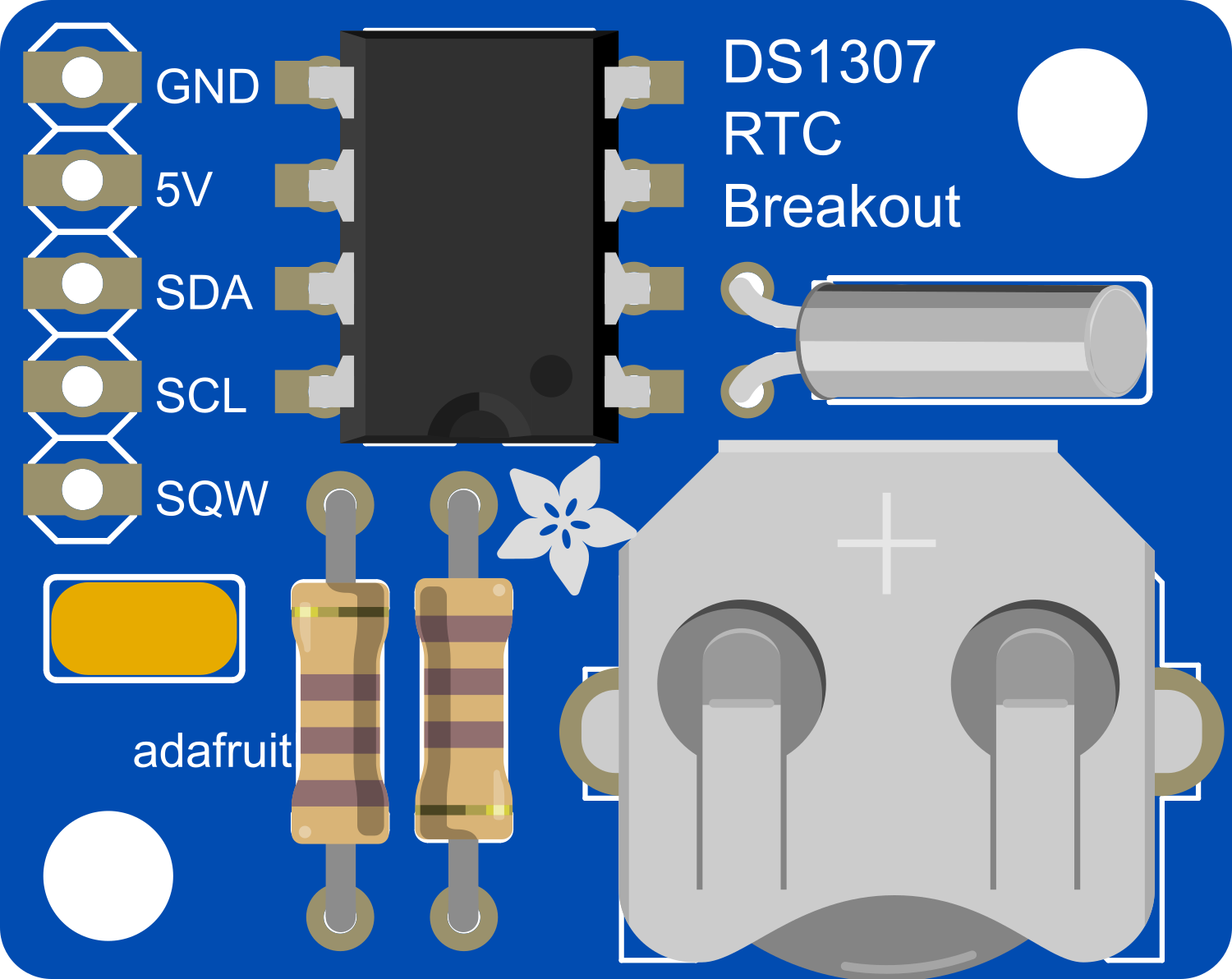
 Design with Adafruit DS1307 RTC Breakout in Cirkit Designer
Design with Adafruit DS1307 RTC Breakout in Cirkit DesignerIntroduction
The Adafruit DS1307 RTC Breakout is a real-time clock (RTC) module that keeps track of the current time and date. It is based on the DS1307 RTC IC from Maxim Integrated. This component is widely used in electronics projects that require timekeeping functionality, such as data loggers, clocks, and schedulers. Its ability to maintain accurate timekeeping even when the main power is off, thanks to a backup battery, makes it a reliable choice for time-sensitive applications.
Explore Projects Built with Adafruit DS1307 RTC Breakout
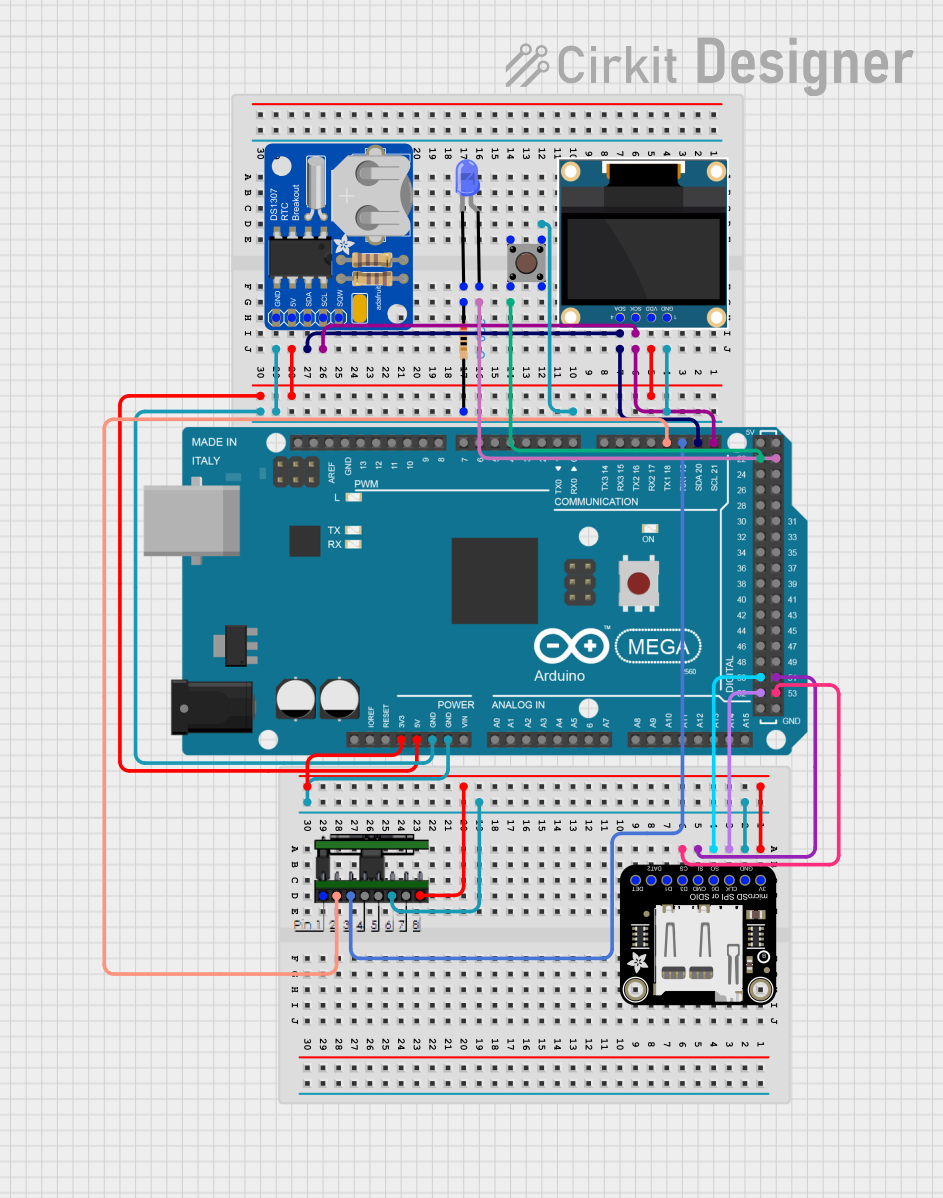
 Open Project in Cirkit Designer
Open Project in Cirkit Designer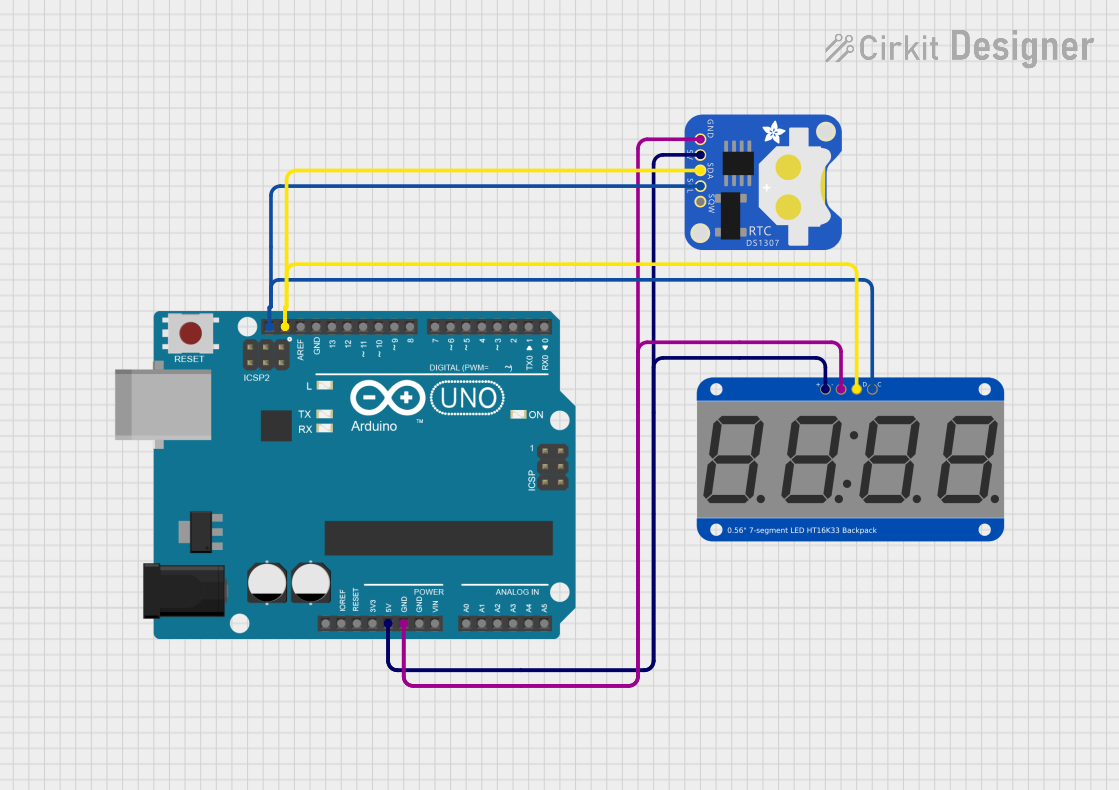
 Open Project in Cirkit Designer
Open Project in Cirkit Designer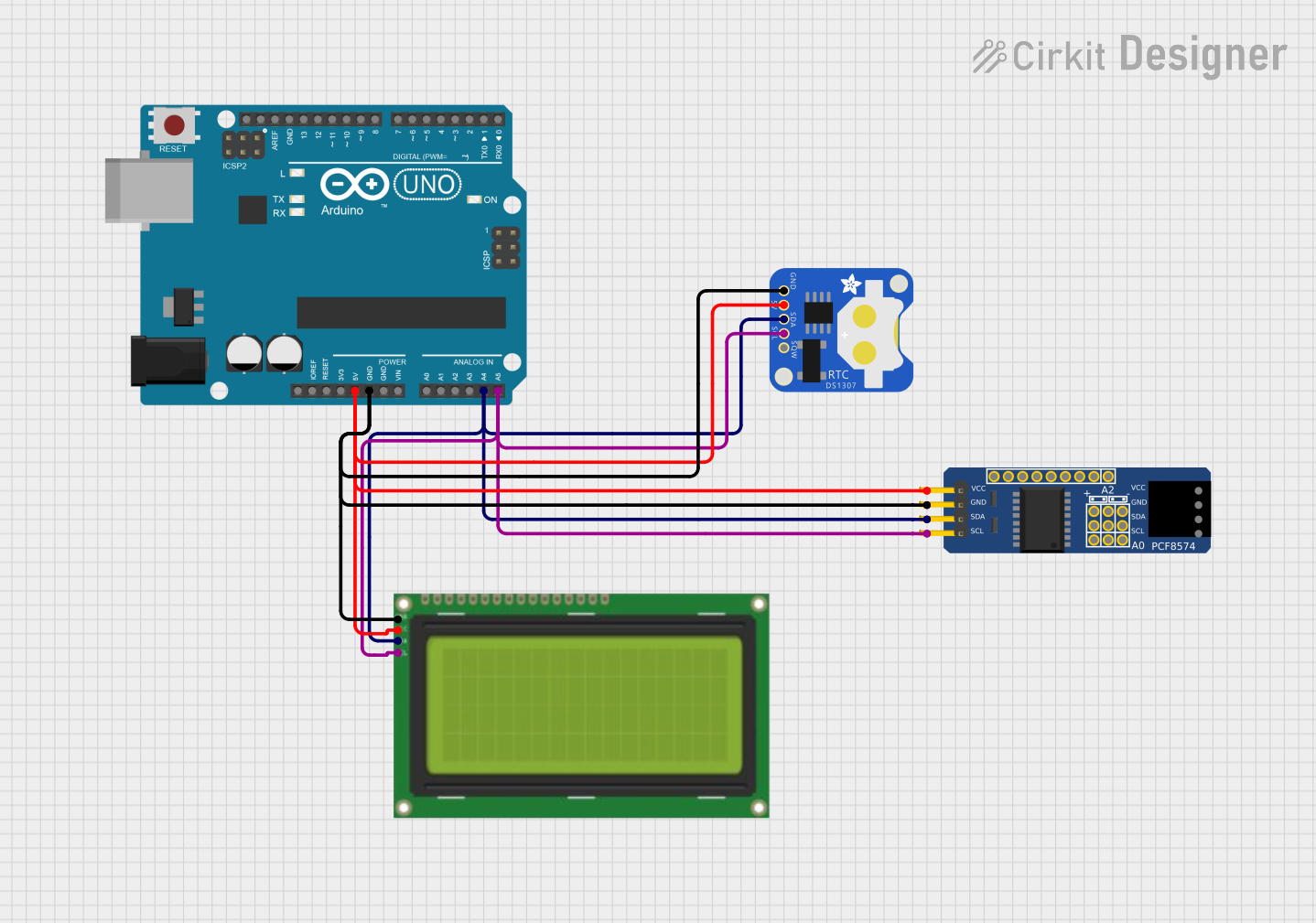
 Open Project in Cirkit Designer
Open Project in Cirkit Designer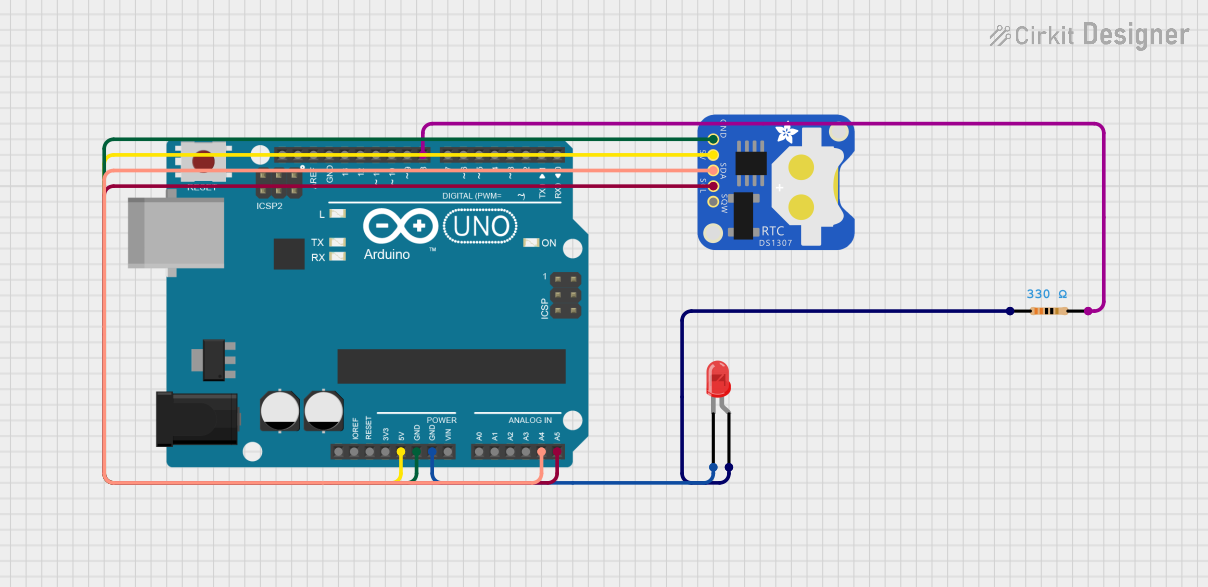
 Open Project in Cirkit Designer
Open Project in Cirkit DesignerExplore Projects Built with Adafruit DS1307 RTC Breakout

 Open Project in Cirkit Designer
Open Project in Cirkit Designer
 Open Project in Cirkit Designer
Open Project in Cirkit Designer
 Open Project in Cirkit Designer
Open Project in Cirkit Designer
 Open Project in Cirkit Designer
Open Project in Cirkit DesignerTechnical Specifications
Key Features
- Timekeeping Accuracy: ±2ppm from 0°C to +40°C
- Battery Backup: Maintains timekeeping when main power is off
- Communication: I2C interface
- Operating Voltage: 4.5V to 5.5V
- Clock Frequency: 32.768 kHz
Pin Configuration and Descriptions
| Pin Number | Name | Description |
|---|---|---|
| 1 | GND | Ground connection |
| 2 | VCC | Power supply (4.5V to 5.5V) |
| 3 | SDA | I2C Data Line |
| 4 | SCL | I2C Clock Line |
| 5 | SQW | Square Wave/Output Driver |
| 6 | 32K | 32.768 kHz Output |
| 7 | RST | Reset (active low) |
Usage Instructions
Connecting to an Arduino UNO
- Connect the GND pin to the ground on the Arduino.
- Connect the VCC pin to the 5V output on the Arduino.
- Connect the SDA pin to the A4 (SDA) on the Arduino.
- Connect the SCL pin to the A5 (SCL) on the Arduino.
Setting the Time
Before using the RTC, you need to set the current time. This is typically done through an initialization routine in your Arduino sketch.
Best Practices
- Use a pull-up resistor on the SDA and SCL lines if your Arduino board does not have built-in pull-up resistors.
- Ensure that the backup battery is properly installed for timekeeping during power outages.
- Avoid placing the RTC module in high-temperature environments to maintain accuracy.
Example Arduino Code
#include <Wire.h>
#include <RTClib.h>
RTC_DS1307 rtc;
void setup() {
Wire.begin();
rtc.begin();
if (!rtc.isrunning()) {
// The following line sets the RTC to the date & time this sketch was compiled
rtc.adjust(DateTime(F(__DATE__), F(__TIME__)));
}
}
void loop() {
DateTime now = rtc.now();
// Print the current date and time to the Serial Monitor
Serial.print(now.year(), DEC);
Serial.print('/');
Serial.print(now.month(), DEC);
Serial.print('/');
Serial.print(now.day(), DEC);
Serial.print(" ");
Serial.print(now.hour(), DEC);
Serial.print(':');
Serial.print(now.minute(), DEC);
Serial.print(':');
Serial.print(now.second(), DEC);
Serial.println();
delay(1000); // Wait for 1 second before repeating the loop
}
Troubleshooting and FAQs
Common Issues
- Time not accurate: Ensure the backup battery is installed correctly and has charge.
- I2C communication failure: Check the wiring, and ensure pull-up resistors are in place if needed.
FAQs
Q: How do I replace the backup battery? A: Carefully remove the old battery and insert a new CR1220 coin cell battery.
Q: Can the DS1307 RTC operate at 3.3V? A: The DS1307 is designed to operate at 4.5V to 5.5V. For 3.3V applications, consider using a different RTC module like the DS3231 which is compatible with 3.3V logic.
Q: How do I read the temperature from the DS1307? A: The DS1307 does not have a built-in temperature sensor. If you need temperature readings, you will need to use a separate temperature sensor.
Remember to keep your documentation up-to-date with the latest information and best practices to ensure users have the most accurate and helpful guidance.